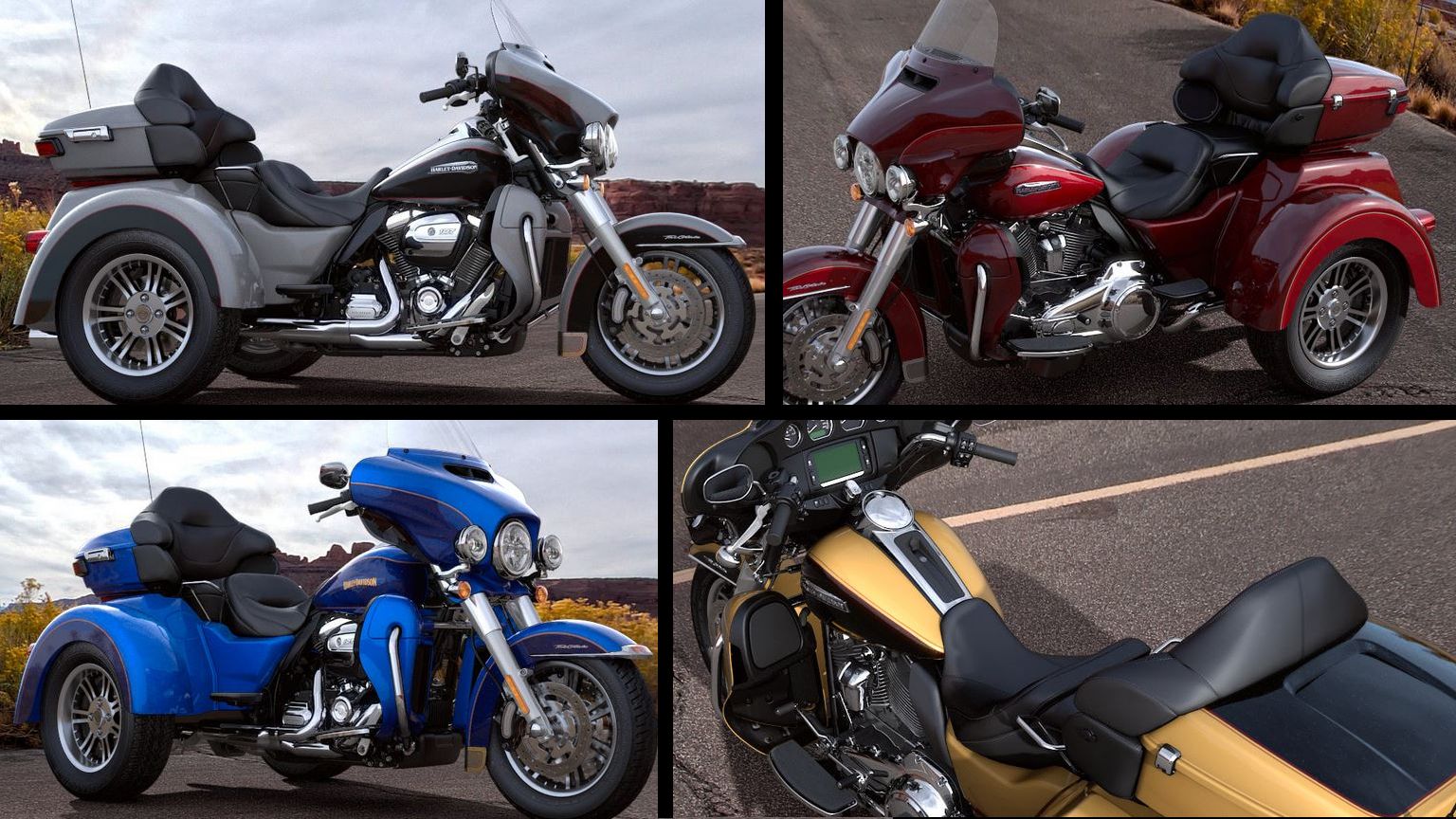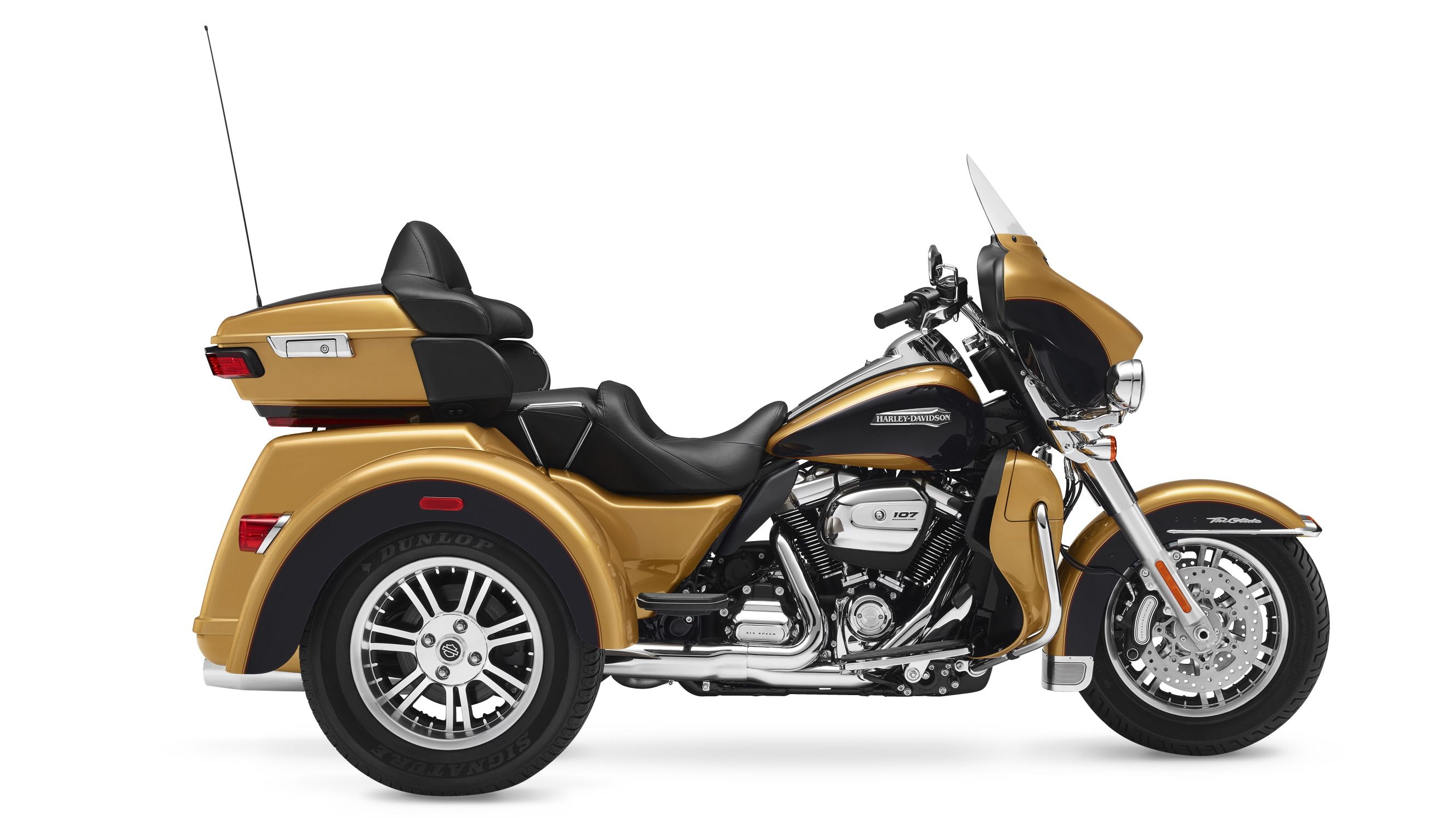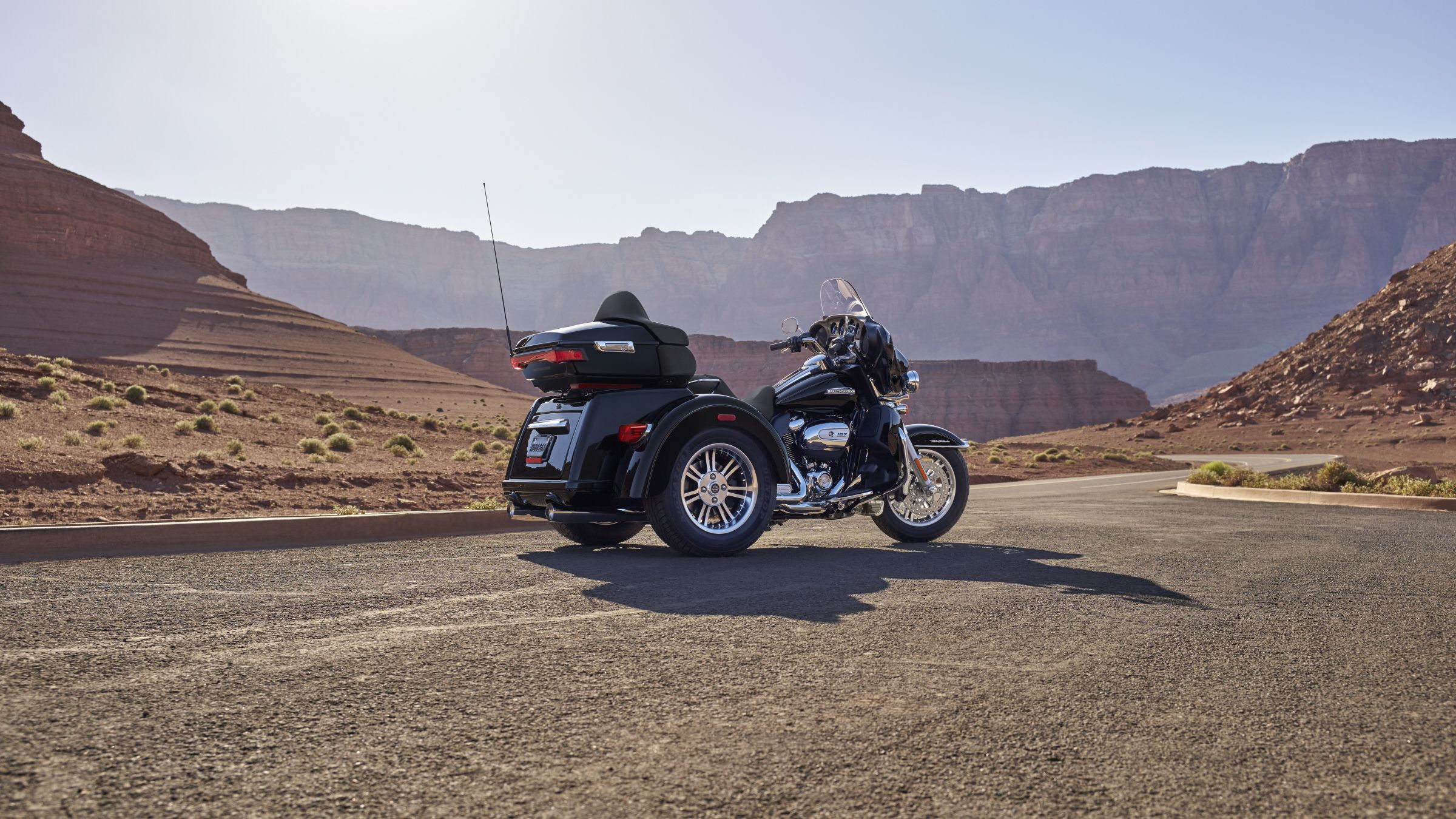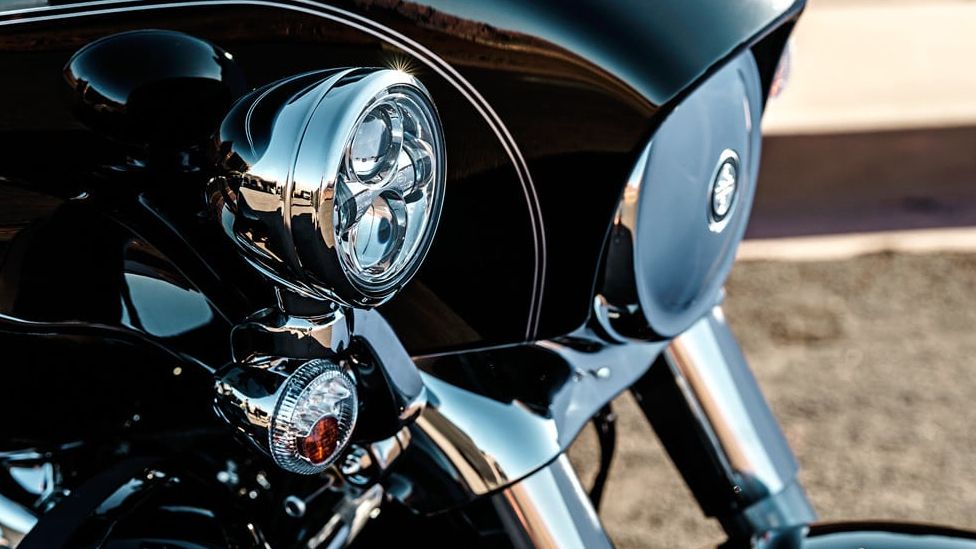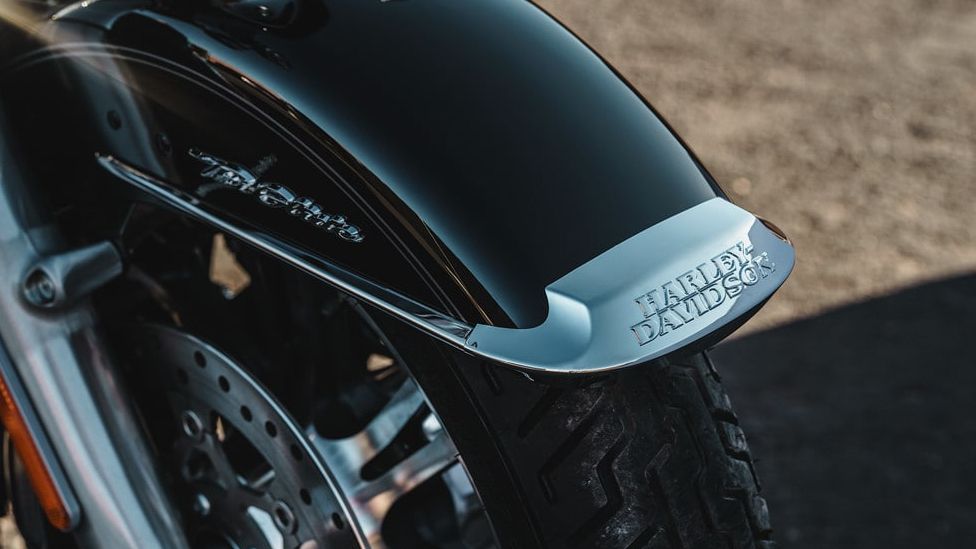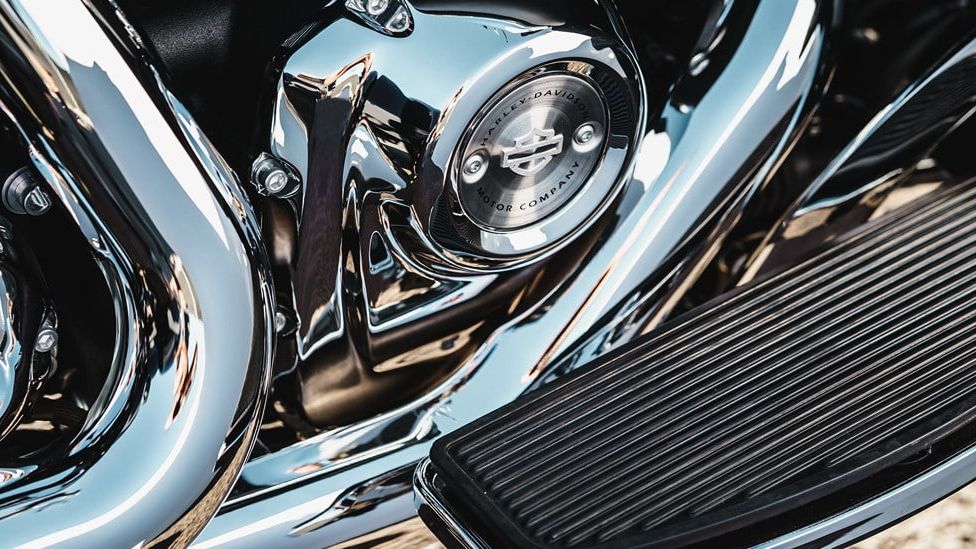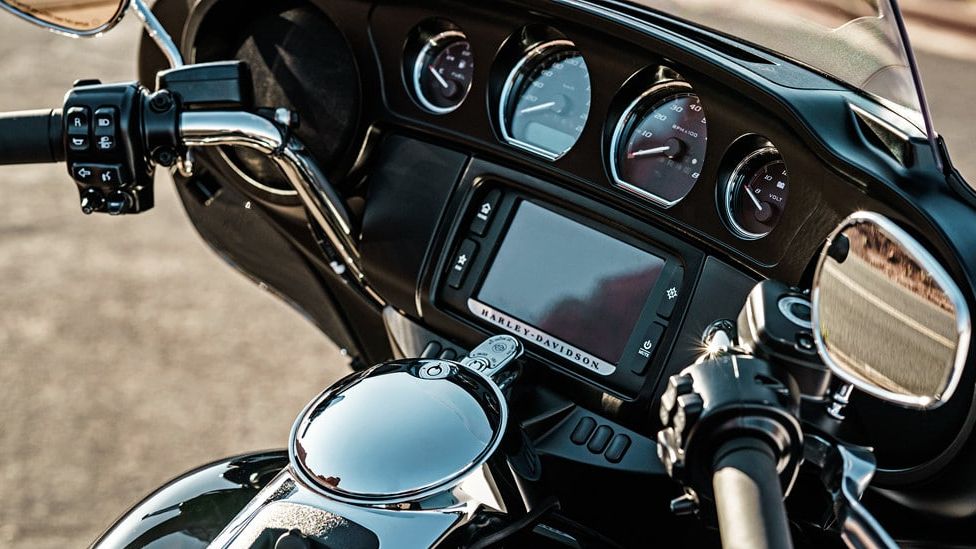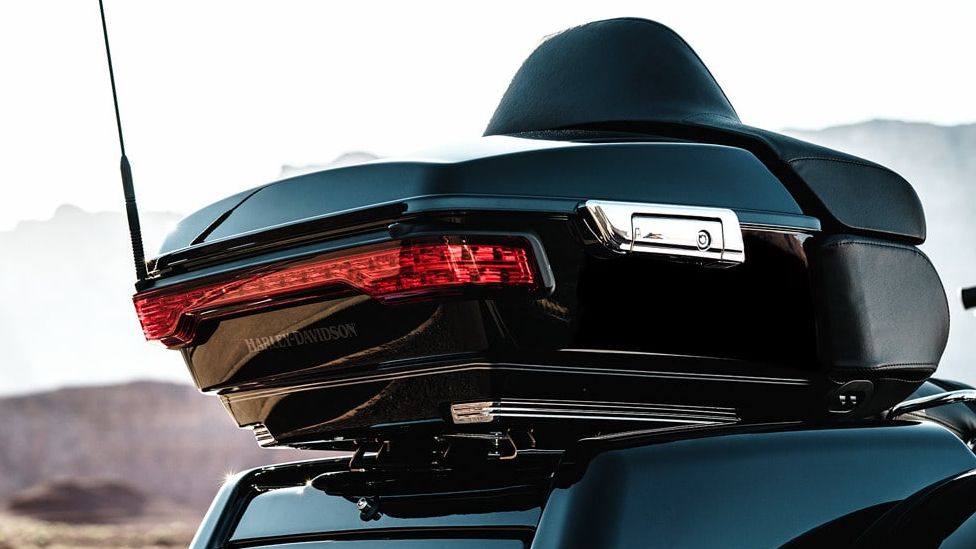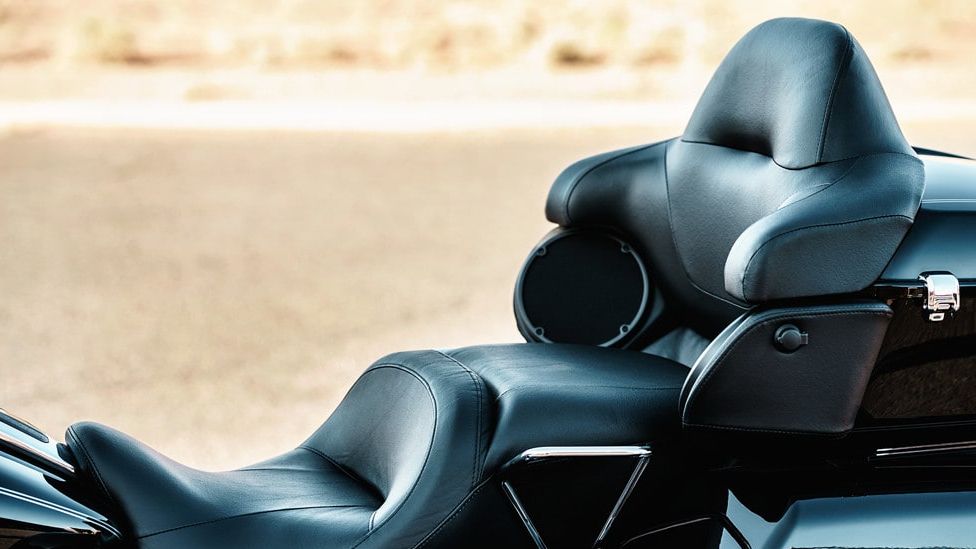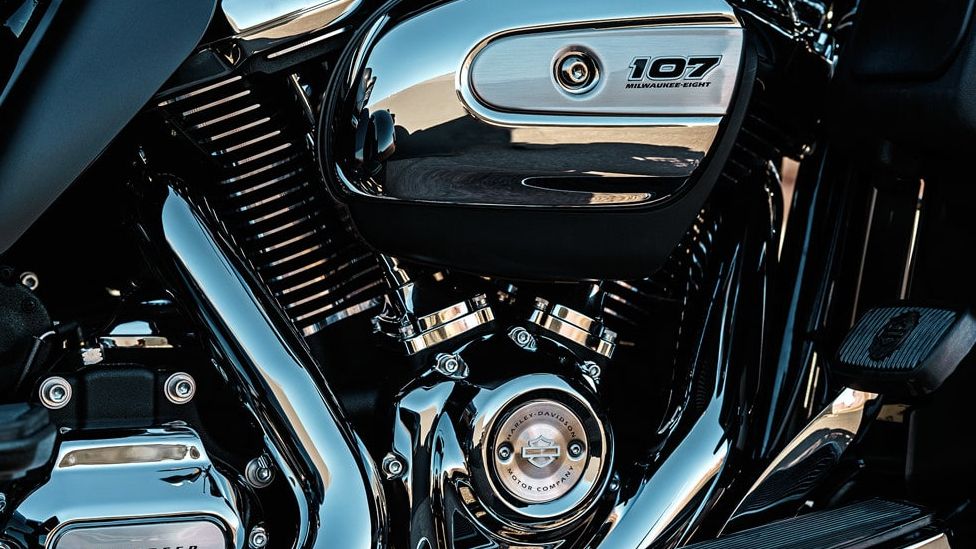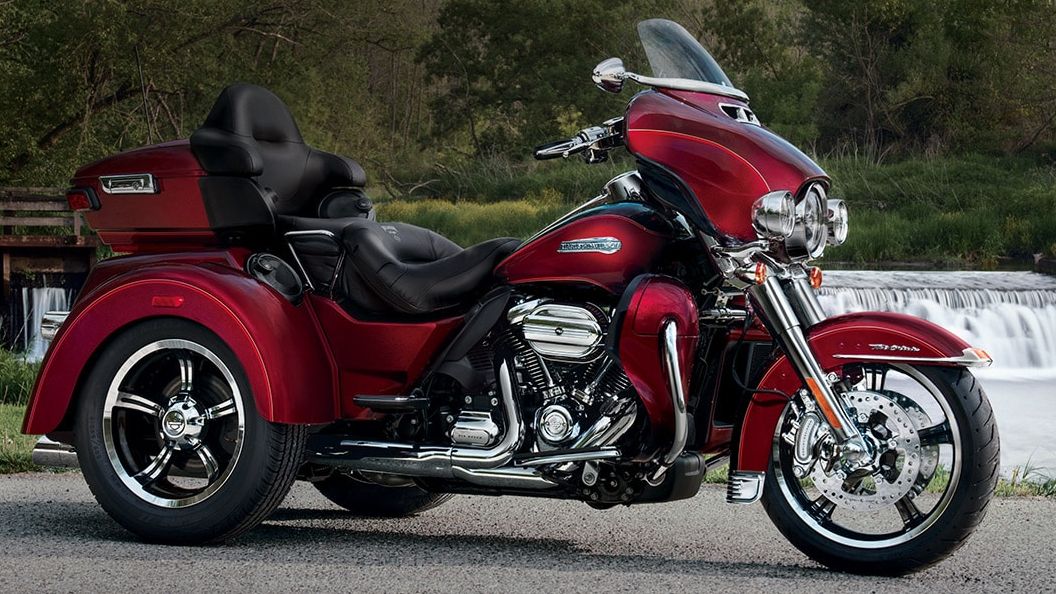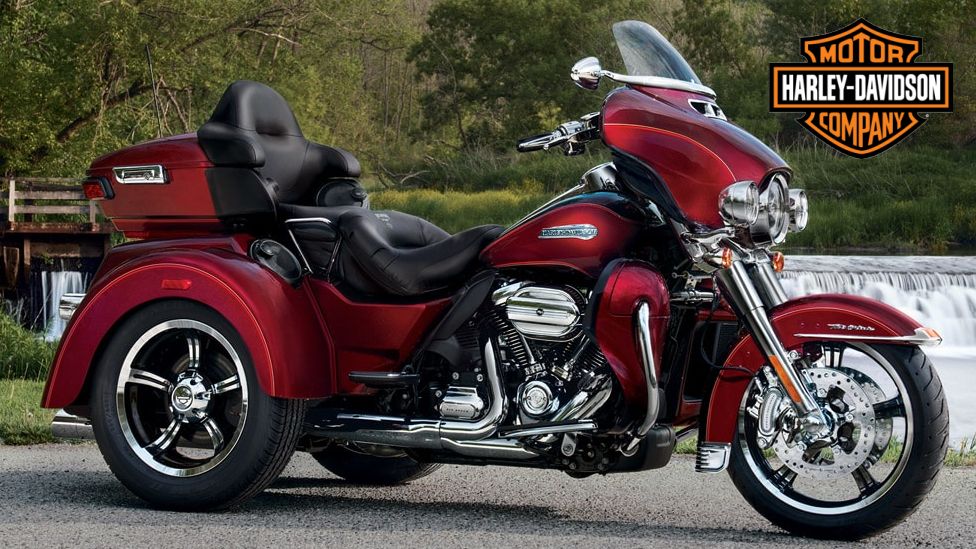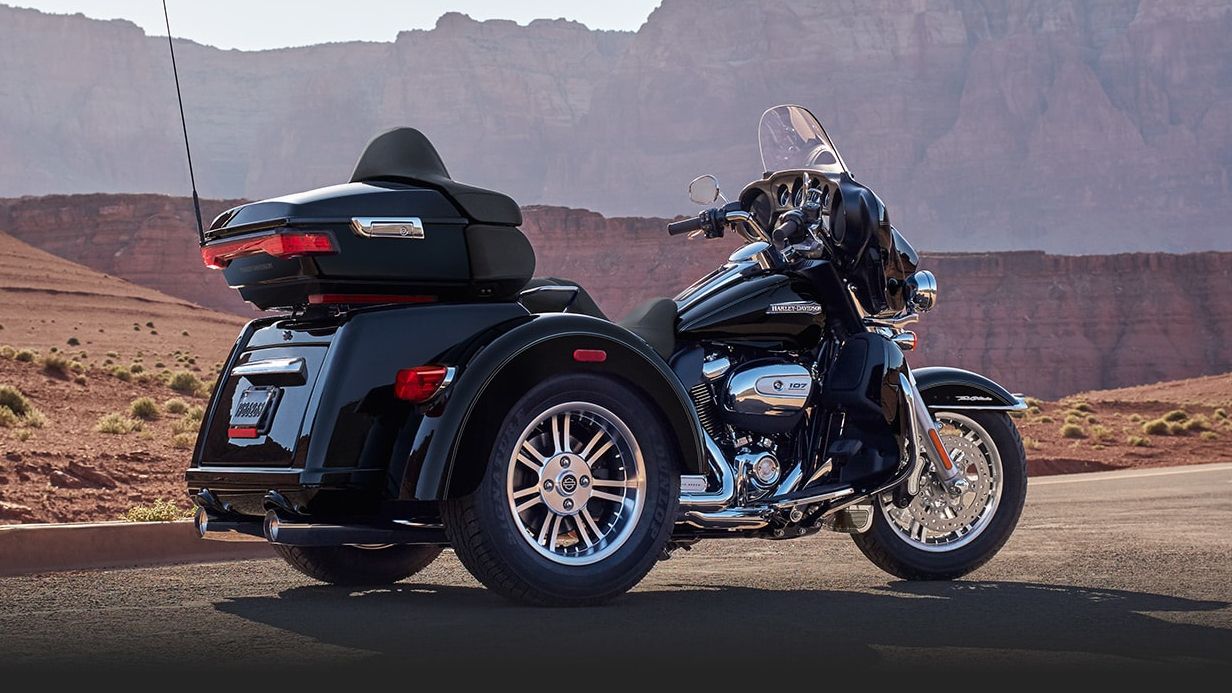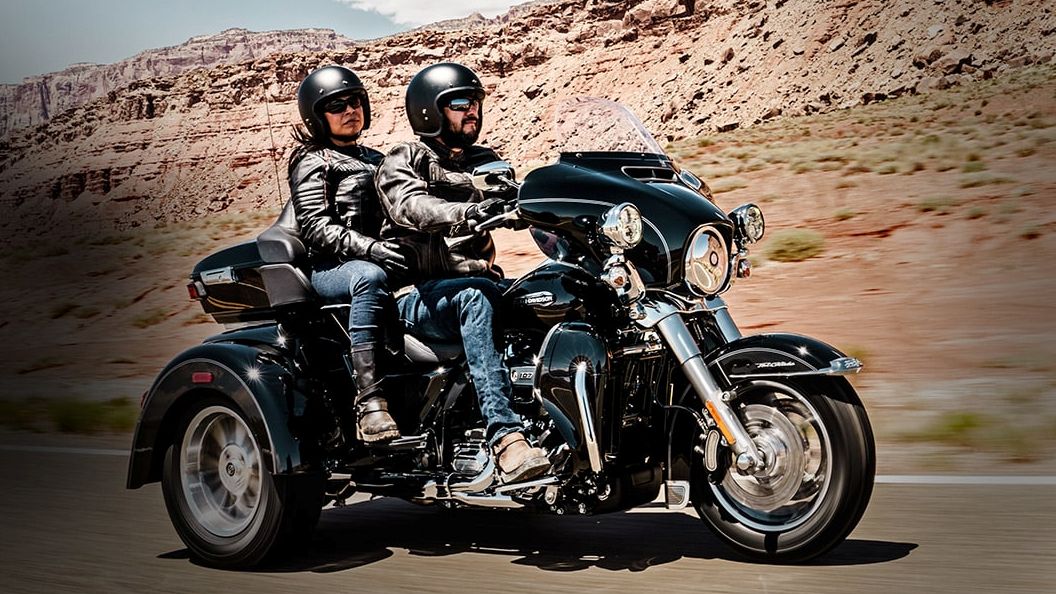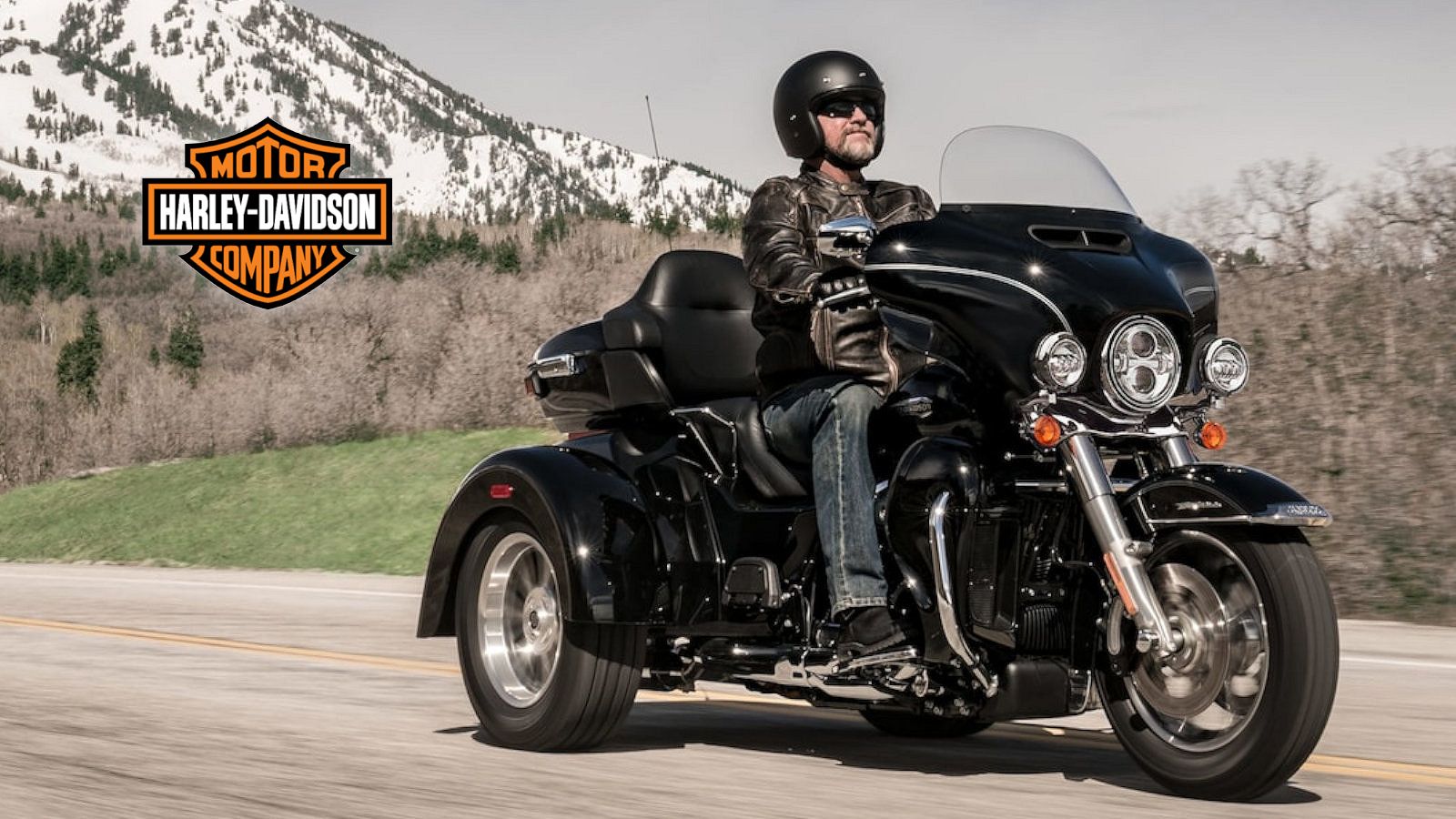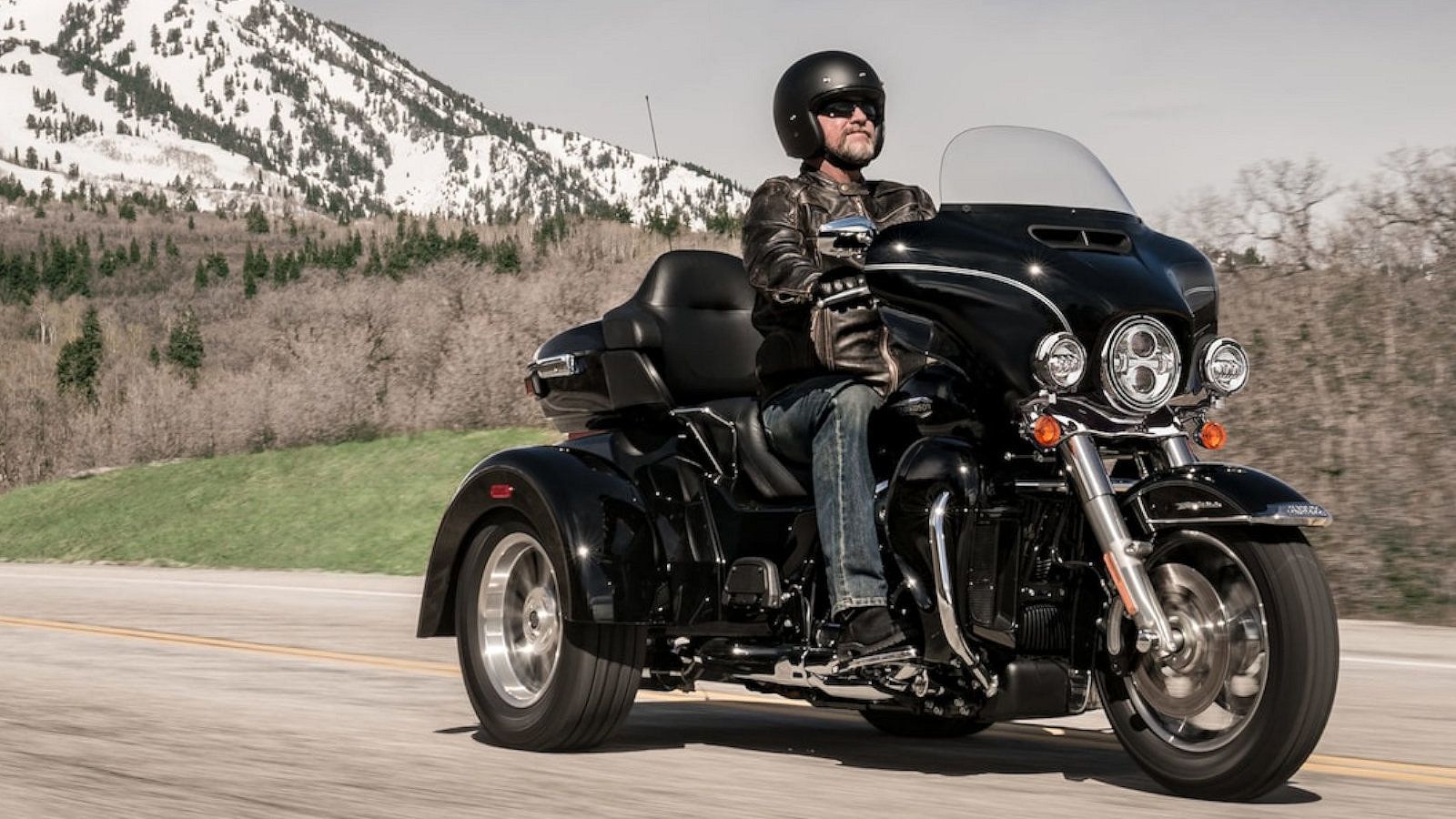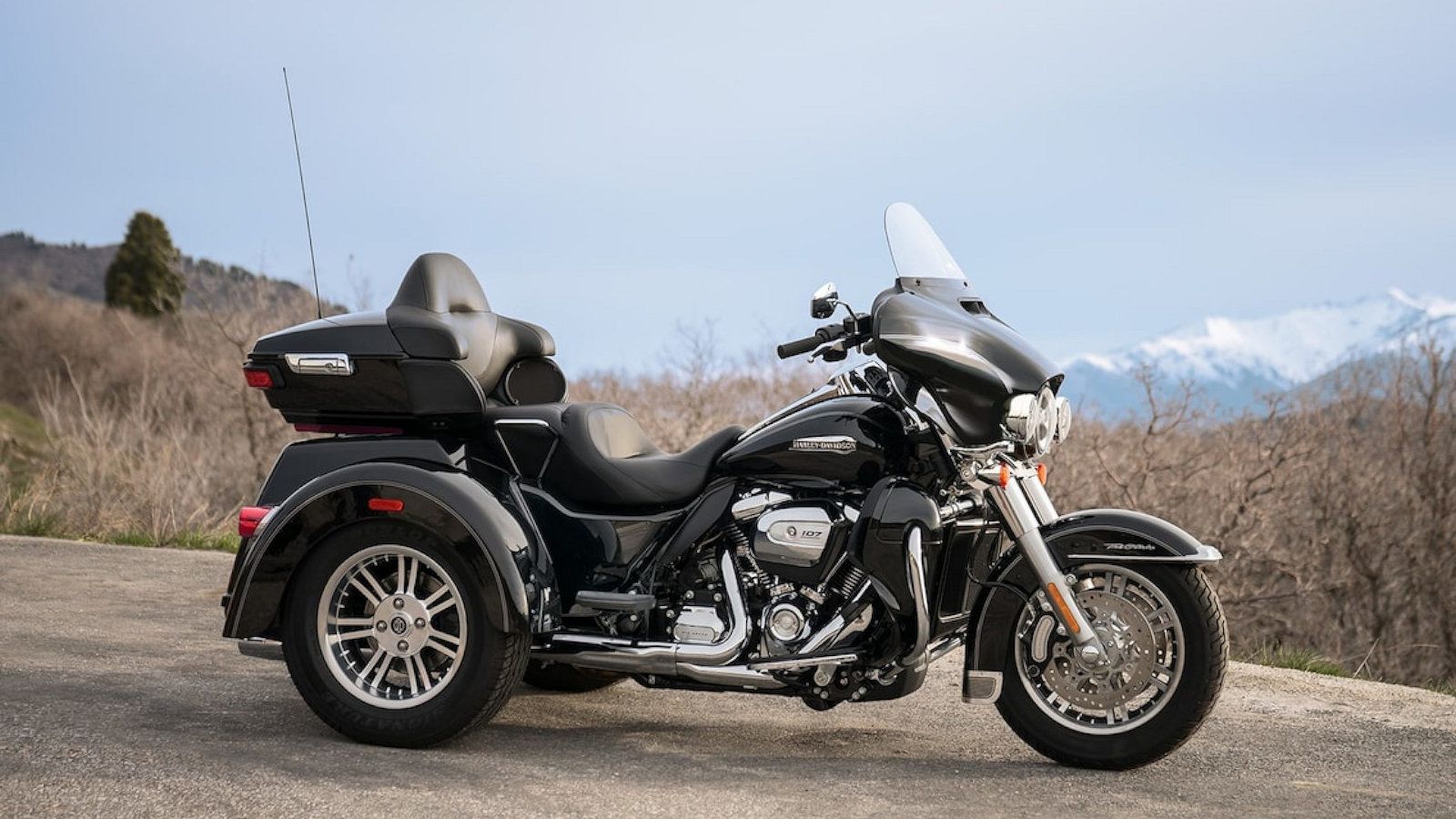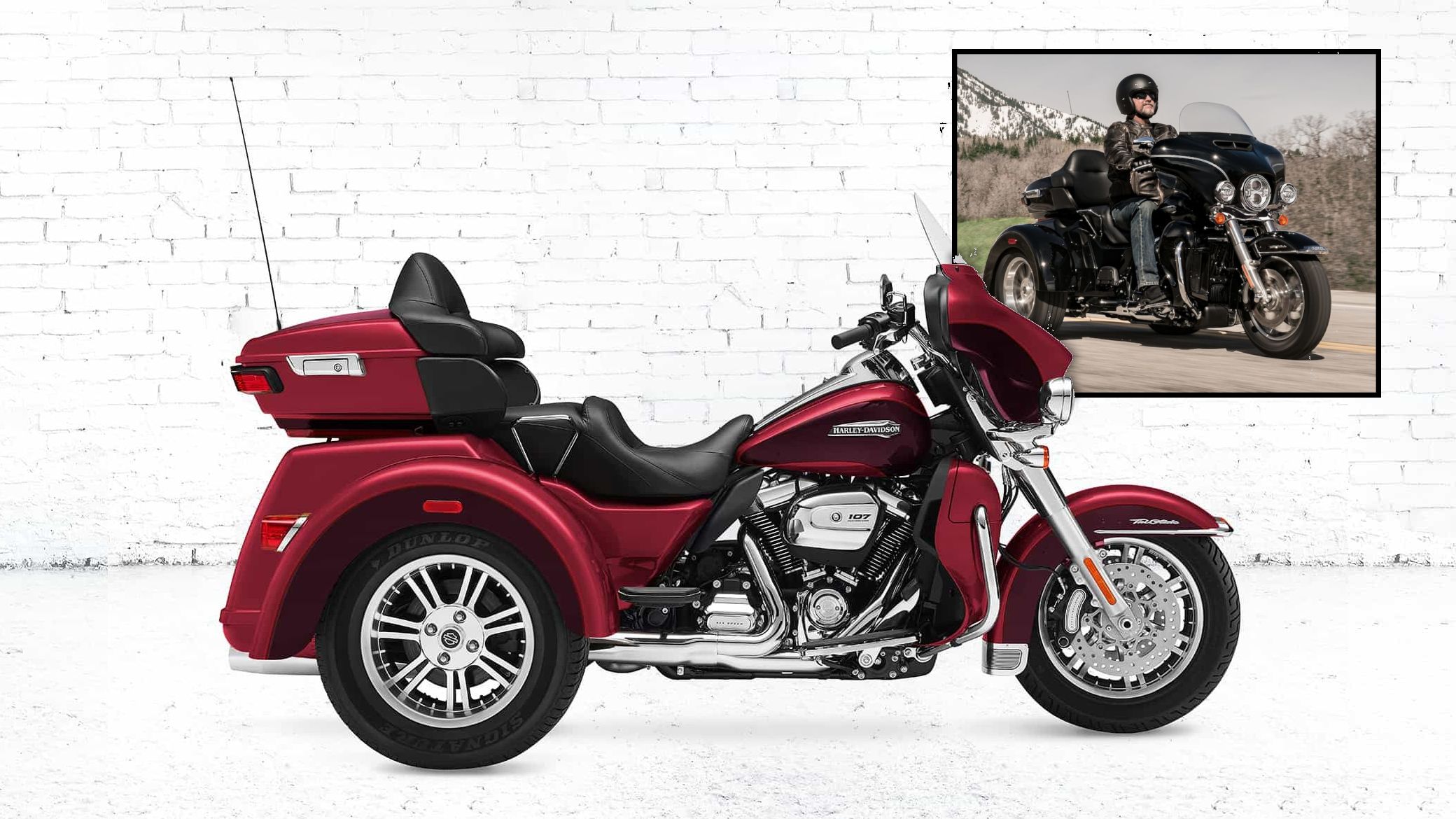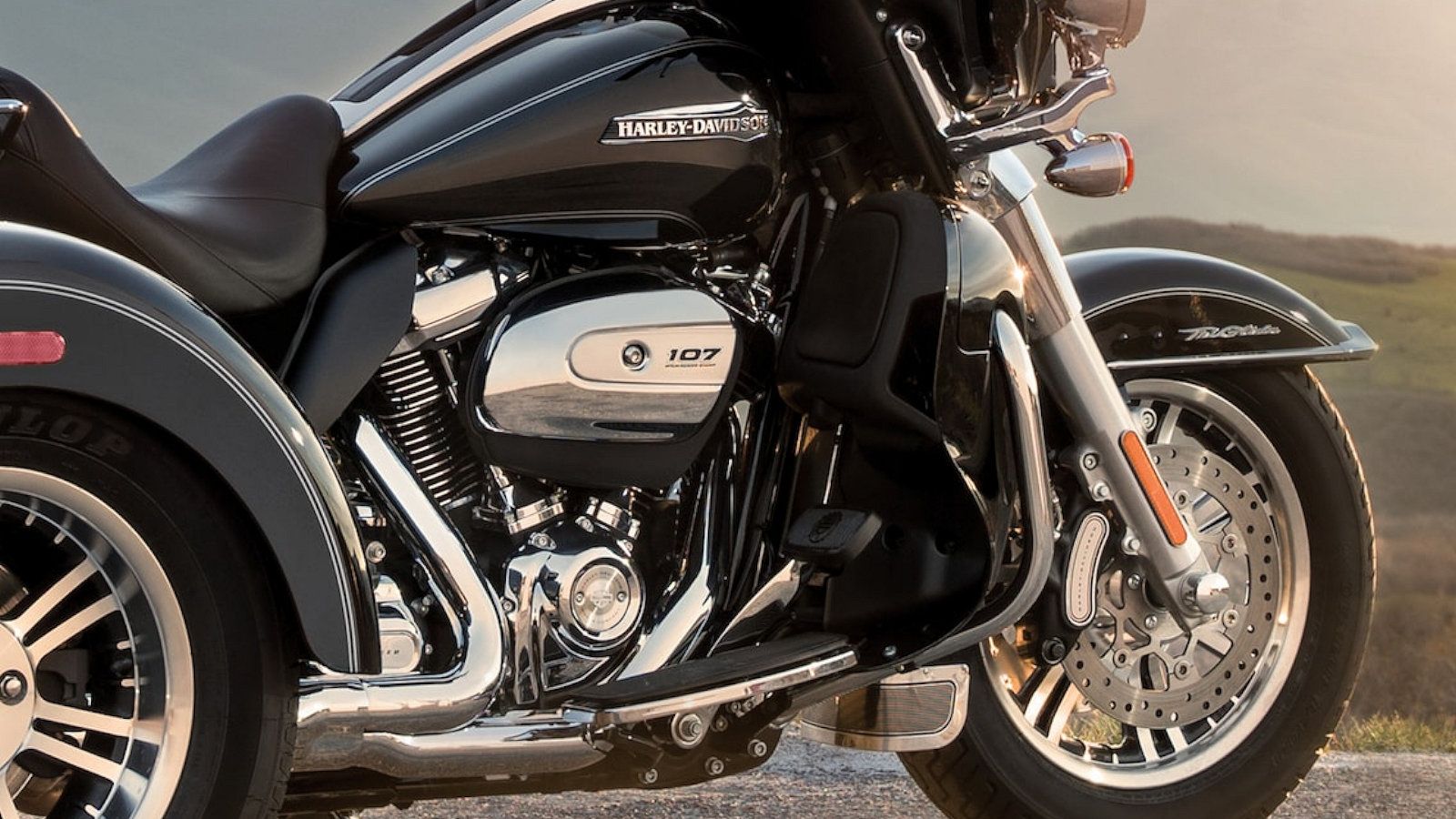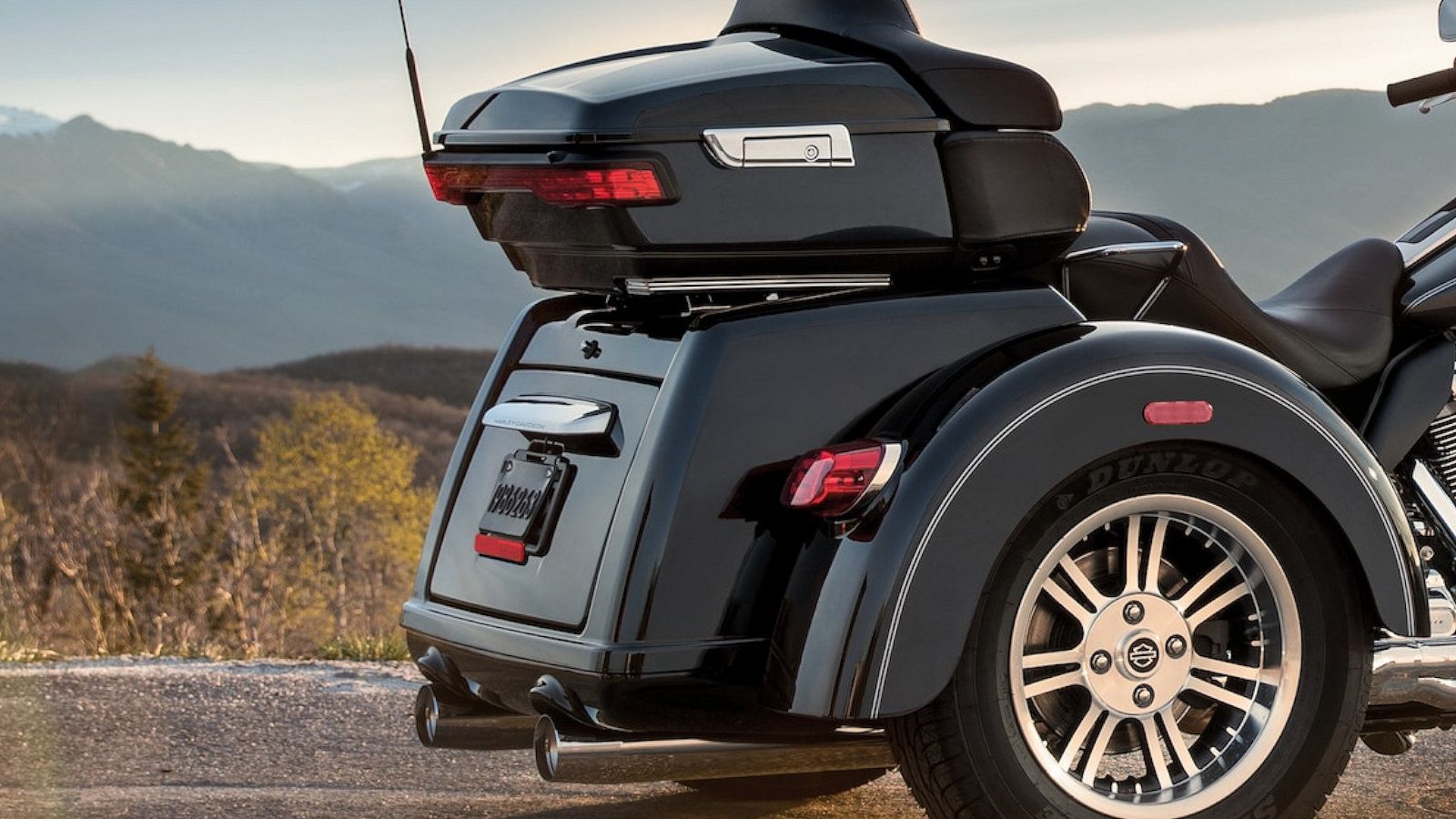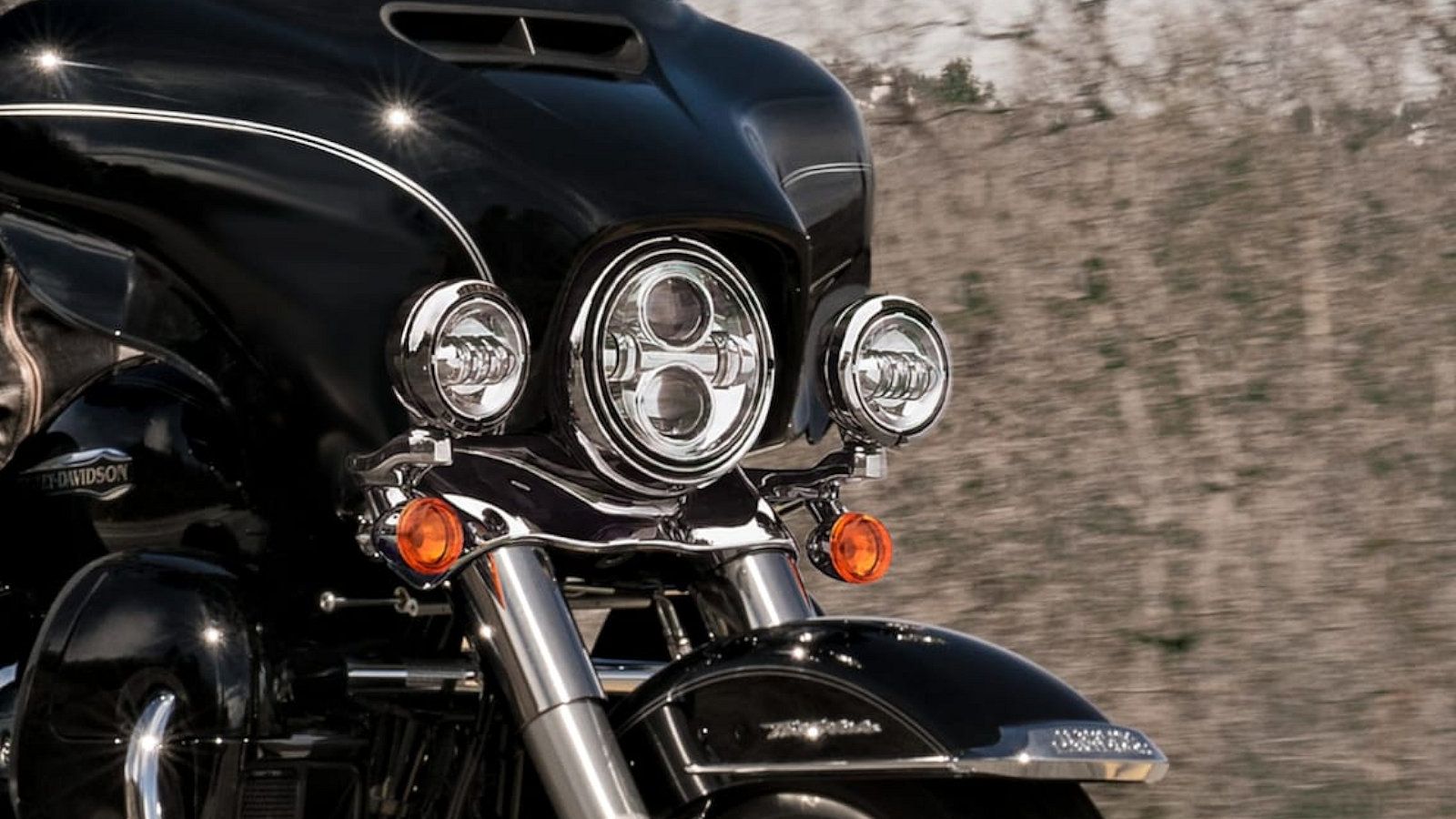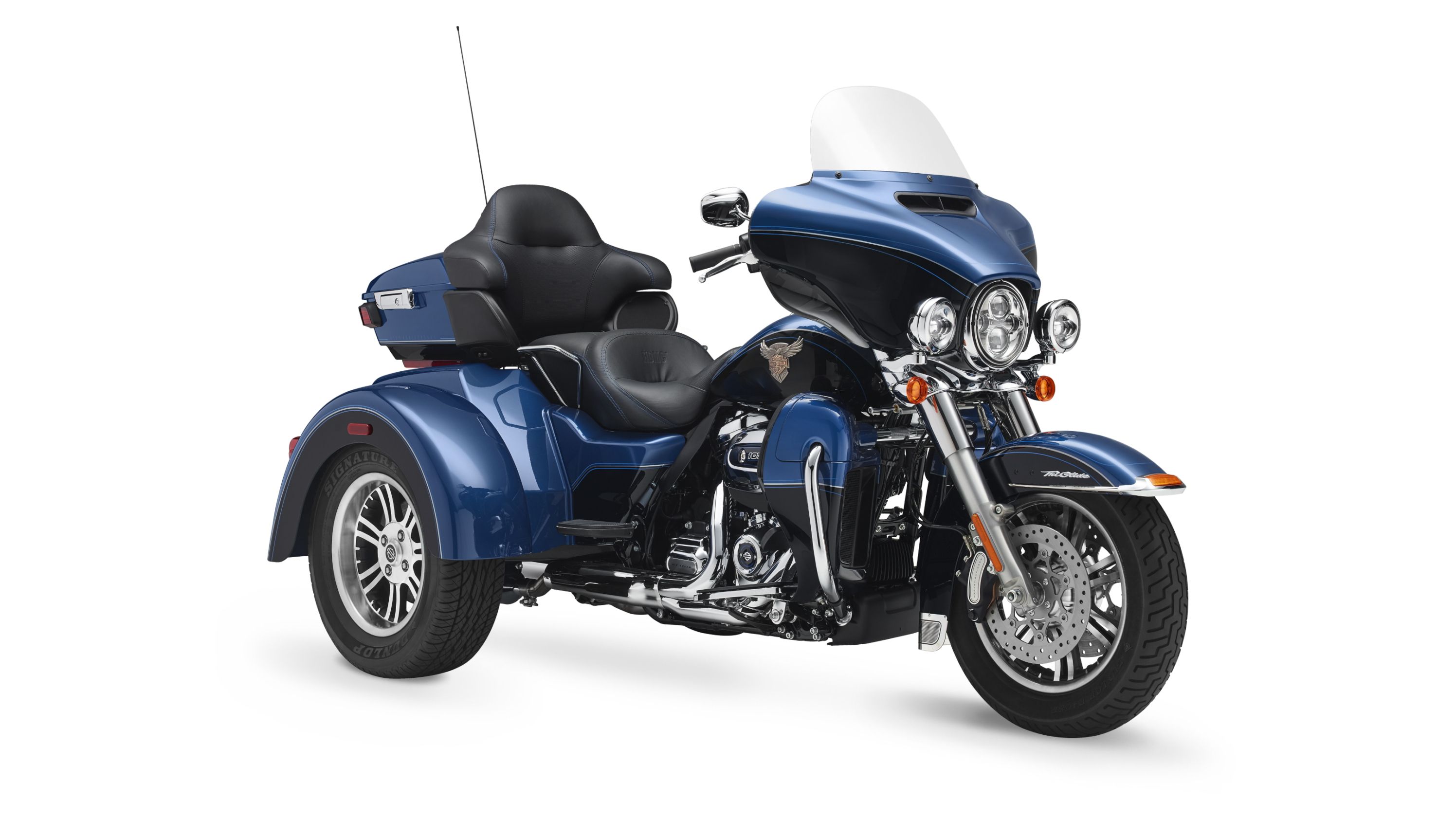Harley-Davidson's three-wheeled Tri Glide Ultra moved into the 2017 model year with a handful of improvements and a brand-spanking new engine. The factory powers it with its powerful Twin-Cooled Milwaukee-Eight 107 engine introduced last year that cranks out over 100 pounds o' grunt to place it well into the power-cruiser category, even though H-D markets it as a tour bike. Exhaust components rerouting addressed heat problems from prior model-years, and the King of Paint added a couple of new, two-tone paint schemes to the palette for 2017, as well as a 115th Anniversary model for 2018. Harley's target market for this beast mainly consists of persons who are unwilling or unable to manage one of their admittedly top-heavy, two-wheeled tourers for one reason or another, and I've always considered it to be a very laudable thing to try and make sure that anyone who wants bugs in their teeth can have it.
Continue reading for my review of the Harley-Davidson Tri Glide Ultra.
2017 - 2018 Harley-Davidson Tri Glide Ultra
- Make: Array
- Model: 2017 - 2018 Harley-Davidson Tri Glide Ultra
- Engine/Motor: Milwaukee-Eight 107
- [do not use] Vehicle Model: Array
Design
Harley's three-wheeled rides go back to 1932 with the Servi-car model that the factory produced all the way up until 1973. After a break in production, Harley teamed up with Lehman Trikes in '08 to convert the Electra Glide Ultra Classic into a three-wheeled version, and have since moved the project to its York, Pennsylvania factory. Mainstream acceptance of trikes has been improving of late as we move past the garage days. We're seeing variations on the theme with backwards delta trikes that come with fixed suspension, and even a few that allow the rider to lean as with a two-wheeler. In short, the trike market is heating up, and Harley has its offerings for folks looking to buy into this increasingly populated and competitive genre.
H-D brings the same level of tour-tastic capability to the Tri Glide as it does with its other, top-of-the-line dressers. A cut-down front fender ties into the past with the traditional chrome skirt and piping while leaving most of the front wheel visible. Beer-can fork covers conceal the inner fork tubes and protect the swept area from road grime.
A chrome panel mounts the bullet turn signals and passing lamps with Harley's Daymaker LED headlight to take care of slicing the night ahead. H-D's Batwing fairing and short windshield punch a hole in the wind with the Splitstream vent to help reduce head-buffeting for more comfortable, long-distance rides. Fairing lowers extend the protection to the legs, which is great but is more of a fringe benefit since their main function is to house the radiator for the twin-cooling feature.
The inner fairing houses the touchscreen interface for the Infotainment system as well as the front two speakers in the Boom! Box 6.5 GT audio system with another pair of speakers that grow from the Tour-Pak below the passenger armrests to complete the package. GPS and virtual-jukebox connections round out the entertainment and navigational features. Since it's got two wheels in back, there's no room for saddlebags, so the factory added an integrated trunk with 6.5 cubic-feet of storage to bolster the capacity of the low-profile Tour-Pak with One-Touch latches that work even with gloved hands. All of this adds up to a well planned-out machine that makes sure nothing comes off looking like an afterthought.
For 2018, Harley gives us almost a dozen models graced with its limited-edition 115th Anniversary package and the Tri Glide Ultra is among them. Included in the package is a serialized fuel door medallion, a nice two-tone Legend Blue and Vivid Black colorway, a really stunning tank emblem, and a few other cosmetic bits and bobs that commemorate the company's 115th anniversary.
Chassis
The double-downtube/double-cradle frame uses mild, tubular-steel members with a rectangular backbone for strength. Granted, it isn't very light, but it is very strong, and that's important given the 1700-pound GVWR and 1,230-pound wet weight. Air shocks give the rear end a plush, almost infinitely adjustable ride, but Harley missed an opportunity to raise its game up front; the 49 mm forks come sans adjustments, and aren't even the Showa Dual Bending Valve variety the factory has started using on other touring models. Really guys?
A damper at the steering head helps minimize kickback, and aids the rider in handling the sometimes-weird forces generated when cornering without leaning into it. The steering head comes set at 26-degrees, and a 6-degree offset gives the forks a 32-degree rake with 3.94 inches of trail. This pushes the wheelbase out to 65.7-inches long, which is still reasonably compact and only a few inches longer than Harley's two-wheel tourbikes.
A set of six-piston brake calipers bite the 300 mm dual discs up front and a single-pot binder grabs the 270 mm rear with Harley's Linked-Brake feature that sends a portion of the rear-brake pressure to the front calipers for balanced brake effort and safer handling. The 16-inch front Dunlop is fairly typical for a bike, but the 15-inch rear wheels run with square corners and wide flats that would look more at home on a cage. Naturally, since it doesn't lean it doesn't need the usual bike-like tires in back, and this comes with the added benefits of having some rather large contact patches in back, and two of them to boot. Good thing too, since it comes without ABS protection. Another opportunity missed.
|
Rake (steering head) (deg): |
26 |
|
Trail: |
3.94 in. |
|
Exhaust: |
Chrome, 2-1-2 dual exhaust with tapered mufflers |
|
Wheels, Front Type: |
Black, 7-spoke Cast Aluminum |
|
Wheels, Rear Type: |
Black, 7-spoke Cast Aluminum |
|
Brakes, Caliper Type: |
piston fixed front with 4-31.75 mm front pistons and 2-25.4 mm linked rear pistons, 31.75mm single piston floating rear |
|
Tires, Front Specification: |
MT90B16 72H |
|
Tires, Rear Specification: |
P205/65R15 |
|
Parking Brake: |
Foot actuated dual parking brake |
Drivetrain
The Milwaukee-Eight engine is absolutely the star of the show here, and represents the greatest improvement from the '17 model year. Primarily an air-cooled plant, the Mil-8 uses precisely-targeted liquid cooling to draw some of that hateful heat from around the exhaust valve to make this the coolest-running engine H-D has ever produced.
In the interest of further heat control, the factory rearranged the exhaust system to move the pipe and the catalytic converter away from the passenger for increased pillion comfort. Though the cooling system is fairly progressive, it's not really new since the factory used it in the Twin-Cooled Twin Cam that the Mil-8 replaces, but all else will be recognizable by longtime fans of the brand.
A 100 mm bore and 111.1 mm stroke is typically undersquare, and adds up to a total displacement of 1,746 cc. Compression is fairly mild at 10-to-1, but it's still hot enough to put you at the mid-grade pump to avoid pinging and dieseling. Naturally, the V-Twin plant really brings the grunt with a crushing 113.6 pound-feet of torque at 3,500 rpm, power that the wide rear wheels put to the pavement like no two-wheeled ride ever could. This makes the Tri Glide something of a stoplight-burner that will surprise many bikes and most cars off the line. Funtimes for all.
Harley's six-speed, Cruise Drive transmixxer controls the ratios with a slip-and-assist clutch for easier effort at the left hand and some back-torque protection, because let's face it, large-displacement V-twins aren't exactly the most responsive engines when downshifting to scrub speed. In fact, they're the worst in this category, and personally, I'd like to see the H-D go to slipper clutches across the board.
|
Engine: |
Twin-Cooled™ Milwaukee-Eight® 107 |
|
Bore x Stroke: |
3.937 in. x 4.374 in. |
|
Displacement: |
107 cu in |
|
Compression Ratio: |
10:01 |
|
Engine Torque (J1349): |
113.6 ft-lb @ 3,500 rpm |
|
Fuel System: |
Electronic Sequential Port Fuel Injection (ESPFI) |
|
Primary Drive: |
Chain, 34/46 ratio |
Pricing
As always, basic black is the stock color, and Harley offers the Tri Glide Ultra in Vivid Black for $34,439. If you want the optional solid-color package you'll have to pony up $35,349. The two-tone packages roll for $35,849. The top-shelf Anniversary model will set you back $36,249 this year.
|
Colors: |
|
|
2017: |
Vivid Black, Superior Blue Blue, Billet Silver/Vivid Black, Mysterious Red Sunglo/Velocity Red Sunglo, Black Hills Gold/Black Quartz, Bonneville Blue/Fathom Blue |
|
2018: |
Vivid Black, Black Tempest, Silver Fortune/Sumatra Brown, Wicked Red/Twisted Cherry. Twisted Cherry/Silver Fortune, Legend Blue/Vivid Black |
|
Price: |
|
|
2017: |
$34,339, Color: $35,189, Two-Tone: $35,689, Custom Color: $36,089 |
|
2018: |
$34,439, Color: $35,349, Two-Tone: $35,849, Anniversary Color: $36,249 |
Competitors
As always, it's tough to find a comparable production ride to compare H-D's trikes to. Sure, there are plenty of Lehman kit-trikes out there, but that ain't exactly the same thing. A Lehman Goldwing would probably be the closest if I had to pick, but again, not a production model. The Tilting Motor Works makes kits as well, and takes it a step further with the ability to lean into the corners, but again, still a kit. We have the Can-Am Spyder products that run a Delta configuration and don't lean, and to be honest, they are a blast to ride, corner like they're on rails and can be configured for gobs of cargo space. That said, they will also appeal to a different buyer demographic, and so don't really work for an apples-to-apples comparison. I know I've compared them in the past, but the forces at work are so different.
If I'm completely honest, you really have to specifically want the old-school trike setup to buy one. The leaning conversion kits really make for a different animal that handles much better than the two-in-back type of trike, as does the Delta setup, so I have a hard time picking a ride that would directly compete.
He Said
My husband and fellow motorcycle writer, TJ Hinton, says, “Can't say I'm a fan. Between the handling concerns and the price, I can think of plenty of alternatives if I were to, Heaven forbid, lose a foot or something. At the top of that list are a few sidecar models I'd consider long before I went that route. I've known a few trike owners, and while they claimed to love their rides, I know for a fact there weren't that many options available when they bought/built them.”
She Said
"My husband, bless his heart, thinks the only folks who want to ride trikes have physical disabilities. I think that's unfair. I like the idea of being able to come to a stop without having to put my feet down. The trike does present a challenge to experienced riders because it handles so differently than a two-wheeler, and on that fact alone, I could recommend it as a beginner's bike for someone who shows an interest in riding but doesn't want to or can't wrestle the weight of a two-wheeler. The slipper clutch is a Godsend for someone like me who has a little arthritis in the hands. The Tri Glide Ultra is a very comfortable tourer and while it doesn't have the fuel economy for me to plug it into the commuter column, I'd definitely use it for errands and as a grocery-getter between runs up the interstate."
Specifications
|
Engine / Drivetrain: |
|
|
Engine: |
Twin-Cooled™ Milwaukee-Eight® 107 |
|
Bore: |
3.937 in. |
|
Stroke: |
4.374 in. |
|
Displacement: |
107 cu in |
|
Compression Ratio: |
10:01 |
|
Engine Torque (J1349): |
113.6 ft-lb @ 3,500 rpm |
|
Fuel System: |
Electronic Sequential Port Fuel Injection (ESPFI) |
|
Primary Drive: |
Chain, 34/46 ratio |
|
Gear Ratios (overall): |
1st: 10.534, 2nd: 7.302, 3rd: 5.423, 4th: 4.392, 5th: 3.741, 6th: 3.157 |
|
Chassis: |
|
|
Rake (steering head) (deg): |
26 |
|
Trail: |
3.94 in. |
|
Exhaust: |
Chrome, 2-1-2 dual exhaust with tapered mufflers |
|
Wheels, Front Type: |
Black, 7-spoke Cast Aluminum |
|
Wheels, Rear Type: |
Black, 7-spoke Cast Aluminum |
|
Brakes, Caliper Type: |
piston fixed front with 4-31.75 mm front pistons and 2-25.4 mm linked rear pistons, 31.75mm single piston floating rear |
|
Tires, Front Specification: |
MT90B16 72H |
|
Tires, Rear Specification: |
P205/65R15 |
|
Parking Brake: |
Foot actuated dual parking brake |
|
Dimensions & Capacities: |
|
|
Length: |
105.1 in. |
|
Seat Height, Laden: |
7 27.1 in. |
|
Seat Height, Unladen: |
7 28.3 in. |
|
Ground Clearance: |
4.5 in. |
|
Wheelbase: |
65.7 in. |
|
Fuel Capacity: |
6 gal. |
|
Oil Capacity (w/filter): |
5 qt. |
|
Weight, As Shipped: |
1,195 lb. |
|
Weight, In Running Order: |
1,230 lb. |
|
Luggage Capacity -Volume: |
6.8 cu ft |
|
Electric: |
|
|
Lights (as per country regulation), Indicator Lamps: |
High Beam, running lights, front fender running lights, directional lights, battery, neutral, low oil pressure, engine diagnostics, cruise control, speakers, accessory, security system (optional), gear indication, low fuel warning, reverse, park brake, miles to empty display, fog/aux lamp indicator |
|
Gauges: |
Large speedometer and tachometer with wide numbers; large fuel and volt gauges with wide numbers; display features odometer, trip A, trip B, range to empty, and gear indicator; and larger telltale indicators, including new reverse indicator light |
|
Infotainment: |
|
|
Screen: |
6.5-inch Color |
|
Watts Per Channel: |
25.0 |
|
Speakers/Size: |
Four - 5.25 inch/6.5 inch - P&A Upgrade |
|
Headset Specifications (if equipped): |
16-64 ohms |
|
Standard Equipped: |
AM/FM, Weather Band (WB), Hands-free Mobile Phone - via Bluetooth, Rider/Passenger Intercom, Vehicle Information Screen (Air temperature, oil pressure and EITMS) |
|
SD Card, Flash Drive and MP3 - via USB Connection: |
Supported |
|
USB: |
USB/MTP/iPod/iPhone |
|
Bluetooth Phone/Media: |
Supported |
|
SiriusXM Presets: |
20 - P&A Upgrade (USA & Canada only) |
|
Details: |
|
|
Fuel Economy: Combined City/Hwy: |
42 mpg |
|
Colors: |
|
|
2017: |
Vivid Black, Superior Blue Blue, Billet Silver/Vivid Black, Mysterious Red Sunglo/Velocity Red Sunglo, Black Hills Gold/Black Quartz, Bonneville Blue/Fathom Blue |
|
2018: |
Vivid Black, Black Tempest, Silver Fortune/Sumatra Brown, Wicked Red/Twisted Cherry. Twisted Cherry/Silver Fortune, Legend Blue/Vivid Black |
|
Price: |
|
|
2017: |
$34,339, Color: $35,189, Two-Tone: $35,689, Custom Color: $36,089 |
|
2018: |
$34,439, Color: $35,349, Two-Tone: $35,849, Anniversary Color: $36,249 |
References
See our review of the Can-Am Spyder RT.


